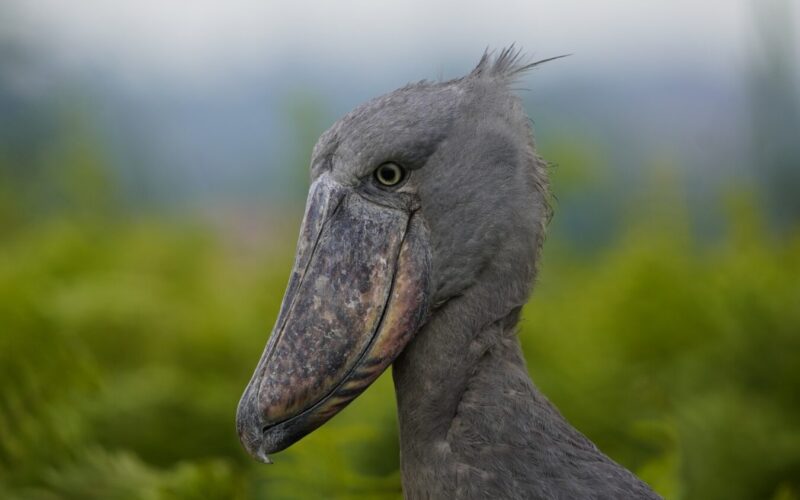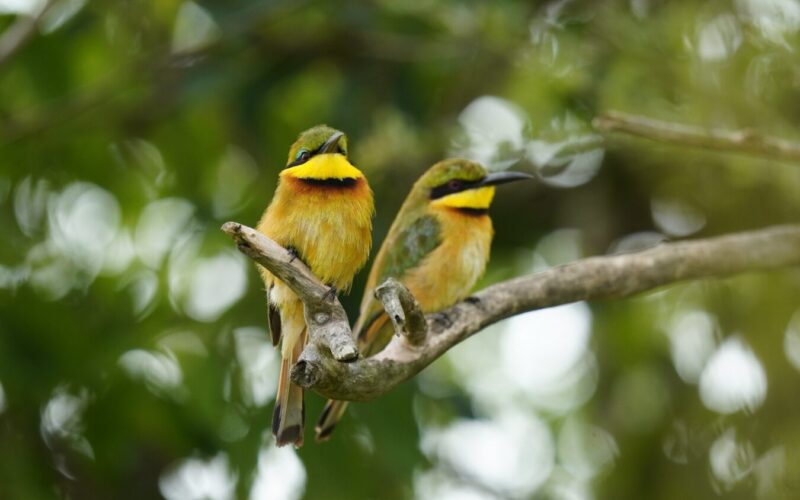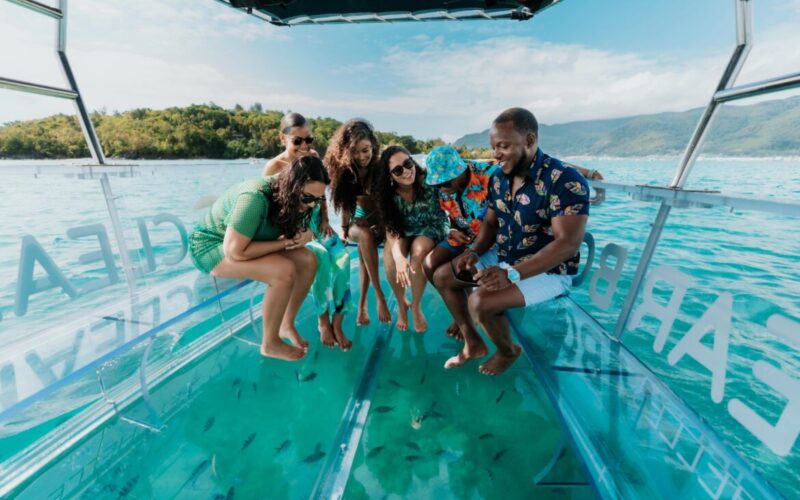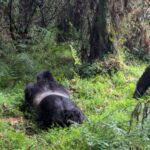
Gorilla Trekking in Bwindi, Virunga, and Volcanoes National Park
October 9, 2025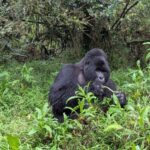
Volcanoes vs Serengeti National Park
October 9, 2025Gorilla Trekking vs Habituation Experience: Choosing the Ultimate Gorilla Experience
For wildlife enthusiasts planning Uganda Gorilla Trekking, Rwanda Gorilla Trekking, or combined Uganda Rwanda Gorilla Trekking adventures, a critical question arises: Should I choose the traditional gorilla trekking experience or invest in a gorilla habituation experience? Both experiences offer unforgettable encounters with mountain gorillas, yet each provides a distinct perspective on these majestic creatures’ lives. At Deks Uganda Tours, we guide travelers through these differences, ensuring that every Uganda Gorilla Safari, Rwanda Gorilla Safari, and multi-country Uganda and Tanzania Safaris journey maximizes both adventure and insight.
Gorilla trekking typically focuses on the tourist experience: a challenging hike through lush forests or volcanic slopes, culminating in a one-hour observation of habituated gorilla families. In contrast, habituation experiences offer extended engagement with semi-habituated gorillas, allowing for longer observation, more immersive learning, and unique photographic opportunities. Both experiences emphasize conservation, wildlife appreciation, and cultural interaction, but the choice depends on budget, physical fitness, photographic goals, and the depth of wildlife engagement desired.
Mountain Gorillas in Uganda: The Bwindi Experience
An Enchanting Landscape
Bwindi Impenetrable Forest lives up to its name, presenting travelers with dense, emerald greenery contrasting against surrounding tea plantations. These plantations act as natural buffer zones between the park and local communities, offering spectacular vistas from Kisoro and along trekking routes. Whether arriving by air or road, the first view of Bwindi’s forested hills inspires awe and anticipation for Uganda Gorilla Trekking or a Uganda Gorilla Tour.
This forest is home to nearly half of the world’s remaining mountain gorillas, making it a critical hub for conservation and tourism. Trekking here immerses visitors in a rich ecosystem teeming with birdlife, primates, and diverse vegetation, while also providing opportunities to support local communities through eco-tourism initiatives. Travelers can stay at lodges such as Clouds Mountain Gorilla Lodge or community-run accommodations, combining luxury and cultural interaction, enhancing the overall Uganda Gorilla Safari experience.
Regular Gorilla Trekking vs Habituation Experience
Understanding the Differences
The regular gorilla trekking experience typically involves hiking to a fully habituated gorilla group, such as the Habinyanja family in Bwindi’s Buhoma sector. Trekkers follow trails that lead directly to the gorillas, often with a shorter hike and a well-established path. Observation time is usually limited to one hour, but it allows for stunning photography and intimate wildlife encounters with minimal physical strain.
Conversely, the gorilla habituation experience allows visitors to accompany trackers for several hours as they locate semi-habituated gorillas, such as the Bikyinji group in Rushaga. This process often involves extensive hiking sometimes five or more hours through steep, dense terrain and an extended four-hour observation period once the gorillas are found. Habituation experiences offer unique insights into gorilla behavior, as visitors witness the gradual process of acclimating gorillas to human presence, including the intricate work of rangers and trackers in ensuring animal welfare.
Hiking and Trekking: Physical Demands
Gorilla trekking requires physical stamina and moderate fitness, as trails can be uneven, steep, and muddy depending on the season. The regular trekking route may take approximately 30 minutes to reach a habituated gorilla family, while habituation treks can extend up to 12 hours in total, including tracking and observation time. This longer journey provides an immersive adventure, yet it is more demanding and may not suit all travelers.
Porters and guides play an essential role, carrying equipment, providing stability on steep trails, and sharing local knowledge about flora, fauna, and gorilla behavior. Trekking with a small group ensures minimal disturbance to the animals, while also providing a safe and structured experience for participants. Deks Uganda Tours coordinates these logistics to guarantee that every Uganda Gorilla Tour is seamless, enriching, and sustainable.
Observation Experience: One Hour vs Four Hours
A key distinction between trekking and habituation is observation time. During regular trekking, visitors spend one hour with habituated gorillas, enough to observe feeding, social interactions, and subtle behaviors. In habituation experiences, the four-hour engagement allows tourists to witness a deeper spectrum of gorilla dynamics, including family hierarchies, playful interactions, and communication signals.
While habituated gorillas may appear more relaxed due to frequent human interaction, semi-habituated gorillas demonstrate natural wariness, requiring visitors to move slowly and attentively. For photographers, this difference presents opportunities to capture both intimate portraits of individual gorillas and the broader family dynamics within a natural forest setting. Balancing time, photographic goals, and energy levels is critical when choosing between trekking and habituation.
Cost Considerations and Accessibility
Permit prices vary significantly: regular gorilla trekking permits in Bwindi cost around $800 USD, while habituation permits can exceed $1,500 USD. Although habituation experiences provide extended observation and unique learning opportunities, regular trekking remains a more cost-effective option, especially for first-time visitors or travelers combining Uganda Gorilla Trekking with Rwanda and Tanzania Safaris.
Bwindi’s accessibility also favors travelers. Compared to Virunga National Park in the Democratic Republic of Congo, Uganda offers more reliable infrastructure, well-maintained roads, and established lodges. Travelers can plan short transfers from Kisoro or Entebbe International Airport, minimizing travel fatigue and maximizing wildlife viewing opportunities.
Cultural Experiences Around the Trekking Lodges
Staying near trekking sectors provides a chance to engage with local communities. In Rushaga and Buhoma, visitors can explore community tourism projects, learn traditional crafts, and participate in guided walks highlighting local flora and conservation initiatives. Many lodges partner with surrounding villages, ensuring tourism revenue supports education, healthcare, and wildlife protection.
Cultural interaction enhances Uganda Gorilla Safari or Uganda Gorilla Tour experiences, allowing travelers to witness how conservation and local livelihoods intersect. Tourists gain insight into indigenous agricultural practices, the significance of the forest in local culture, and community-led conservation strategies. These experiences complement wildlife encounters, offering a holistic East African adventure that integrates nature, culture, and sustainability.
Tips for a Successful Gorilla Trekking vs Habituation Experience
Hire Porters: Even if you feel capable of carrying your gear, porters provide invaluable assistance and support local employment.
- Use Walking Sticks and Gloves: Essential for navigating steep terrain and dense undergrowth safely.
- Pack Essentials: Bring at least two liters of water, packed lunch, snacks, rain gear, and a camera with spare batteries.
- Wear Proper Clothing: Long sleeves, durable trousers, and breathable layers protect against scratches, insects, and weather.
- Maintain Patience and Respect: Move quietly, follow guide instructions, and avoid disturbing gorilla behavior.
These recommendations ensure a comfortable, safe, and rewarding trekking experience, whether participating in regular tracking or extended habituation experiences.
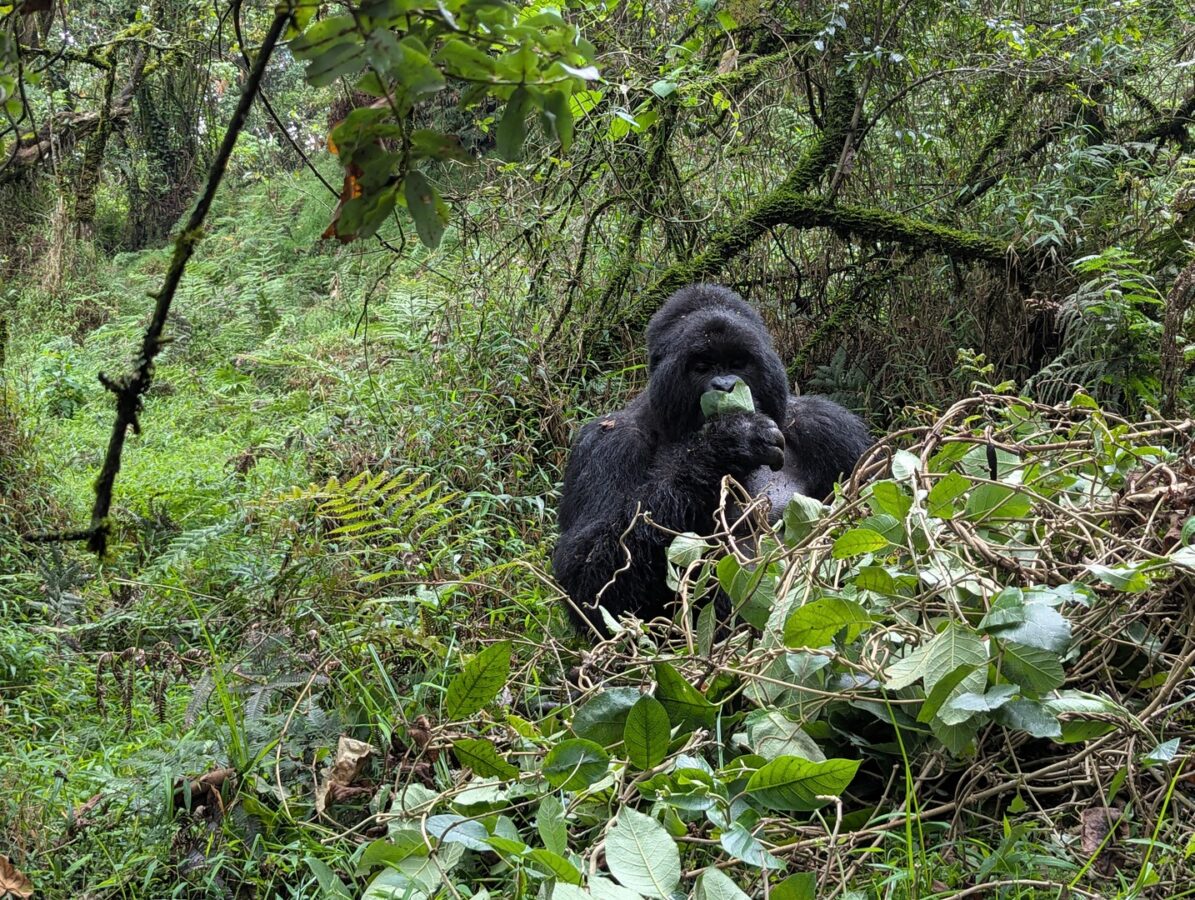
Rwanda Gorilla Trekking Safari
Choosing Between Gorilla Trekking vs Habituation Experience
Both gorilla trekking Vs habituation experiences offer transformative wildlife encounters. Trekking provides an accessible, less physically demanding experience for visitors seeking iconic photographs and brief, intense observation. Habituation offers deeper immersion, extended observation, and unique insights into gorilla social behavior, catering to photographers, wildlife enthusiasts, and conservation supporters.
Deks Uganda Tours recommends that first-time travelers or those combining Uganda Gorilla Trekking with Rwanda and Tanzania Safaris consider regular trekking for efficiency and affordability. Those seeking a multi-hour, immersive, and educational experience may choose habituation, prioritizing engagement over convenience. Both experiences highlight the importance of conservation, sustainable tourism, and community involvement, ensuring that East Africa’s Mountain gorillas remain a global treasure for generations.

